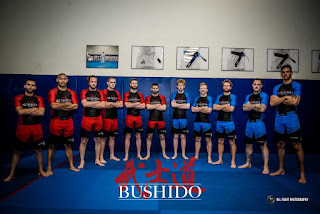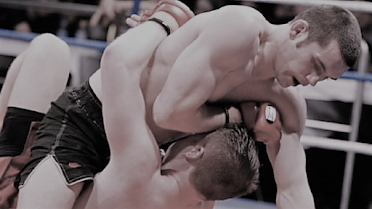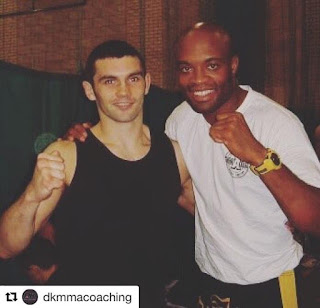Realism.
Tuesday, 2 March 2021
What I love about MMA
Realism.
Podcast Interview with Sonny Brown
Here is a new interview I did on my friend Sonny Browns Podcast.
Sonny is a great martial artist and experienced MMA fighter but also a very successful and talented Podcast host. He has had some huge names in the BJJ & MMA community as guests on his show over the last few years so I was very honoured to be invited.
https://sonnybrownbreakdown.com/life-lessons-from-the-worlds-longest-lockdown-with-denis-kelly
Tuesday, 1 December 2020
What I hate about MMA
Too many fighters try to win by being heavier than their opponents rather than putting in the time to master the fundamental skills of fighting. They focus on how much weight they can cut but dont spend learning how to throw a straight punch without dropping their hands.
Weight divisions are necessary so fighters can be matched with opponents of similar size however weight cutting is one of the prime examples of how far MMA has gotten away from its roots.
Monday, 26 October 2020
How to make the most of your BJJ Training
What is the best way to learn and improve in martial arts training?
- Determine the skills you need to master - For example, Choose a combination technique, one specific type of guard pass or a takedown. Your coach should be able to assist you with choosing which skills you need to master to achieve your goals.
- Set specific goals related to mastering that skill - For example, your goal is to consistently use this technique in sparring against experienced training partners. The type of goal you choose is very important. It must not be too easy but also not impossible. It should be what is known as a “Stretch” Goal - something that is achievable but will stretch your ability in order to achieve it.
- Understand the meaning of achieving this goal and mastering this skill in your journey - Understand what it will mean to your overall development if you are able to successfully master this key skill. Being world class at this technique will allow you to reach your competition goals.
- Understand the key success factors that will make or break this technique and develop your strengths in those areas. For example, grip strength, balance, mobility. Work to develop these specific attributes in order to achieve your goal. Do this while simultaneously correcting the weaknesses in your technique.
- Get a clear visualized idea of what the technique or skill should look like if applied successfully by carefully observing your coach, training partners or videos of experts then compare to video of yourself practicing the skill or using it in sparring or competition.
- Schedule challenging practices developed by your coaches - for example, your goal could be to use the chosen technique in each round of sparring against a line up of fresh opponents.
- Measure your progress and get feedback - Keep track of your training, write it down, what worked and what didn't work, video your sparring sessions to get accurate feedback of exactly what you did right and wrong. Ask your coach for specific feedback about exactly which part of which technique you need to improve or work on.
- Socialise your learning by practicing or competing with others - This is usually the easy part in terms of martial arts training because you will mostly be in classes alongside others.
- Continue setting higher-level goals so you keep improving - Once you have mastered the skill or are able to consistently apply it against resistance then set higher-level goals so you can keep improving and avoid stagnating.
Thursday, 1 October 2020
The Fight is All Podcast Interview
Check out this new interview I did with my friend and fellow MMA coach Sevastiyan Kostov. Coach Sev is a highly experienced and very knowledgeable fighter and coach with a background in Combat Sambo. We had a great chat on his podcast and discussed a variety of topics including our martial arts training backgrounds, fake martial arts, trash-talking and bad behaviour in the UFC and the best training and coaching methods for MMA.
The Fight is All Podcast Interview
Sunday, 20 September 2020
Plan your MMA Fight Career
How to make the most of your MMA Training
One of the most important things for an aspiring fighter is to have a goal and a plan for what you want to accomplish. This is something which is often neglected by Fighters.
- compete and win in amateur MMA
- compete and win as a professional in MMA
- amass a winning record against legitimate opponents
- win regional and national titles in smaller promotions
- get signed by the UFC or one of the other major international promotions
- amass a winning record until you get into the top ten rankings and then eventually fight for a title.
Fedor Emelianenko Technique Breakdown
The keys to success for Fedor are his high-level Judo background combined with excellent Boxing & striking skills. His style could be described as ‘Judo-Boxing’ when on his feet combined with devastating Ground and Pound once the fight goes to the floor.
Judo combines very well with boxing in terms of mixing fighting styles for MMA.
Judo & Boxing stance is very similar - Upright stance with hands up to grip fight in Judo to protect from punches in boxing.
Judo has a heavy emphasis on Grip fighting / Hand fighting which can be adapted for striking as a means of removing the opponent's guard.
The Kuzushi/off-balancing of Judo can be used to set up strikes in the clinch position
The strengths of one style cover the potential weakness of the other:
One of the problems with Judo can be in closing the distance in order to use the techniques - Boxing your way into clinch range which Fedor does very successfully is an example of how the two styles can work together.
Another problem is that the techniques which result in a win via Ippon in Judo such as a high amplitude may not be worth the risk in an MMA fight. For example, the Hip Throw or Shoulder Throw may result in throwing the opponent but not actually injuring them or landing in an advantageous position. However, the Kuzushi or off-balancing that goes into setting up these techniques could also be used to push and pull the opponent onto strikes. This is something that Fedor has used extensively in many of his fights.
I have broken this session down into combinations based on techniques which Fedor has used in his fights. Although some of these combinations are not taught exactly the way that he used them, I feel that practising them in this format is an efficient way to learn while also getting an understanding of the concepts and principles which make the techniques work.
Technique A - Used versus Kazuyuki Fujita
Combination: Right Hook - Left Body Kick - Right Cross - Left Hook
Key Ideas: Fedor employs fast accurate striking. Focuses on using punches most notably the ‘Russian Hook’ but also mixes it up with kicks which he has refined through extensive Dutch Kickboxing training with Ernesto Hoost.
The Russian Hook involves finishing the punch with the thumb down and shoulder high and is perfect for entering into clinch via collar tie or under-hook grip.
Technique B - Used versus Cro-Cop
Combination: Right Cross to Body - Left Uppercut - Left Hook
Key Ideas: Cro Cop is obviously aware and cautious of Fedors heavy right hook and is ready to defend punches to the head. Fedor is very good at mixing up the targets of his strikes rather than just ‘head-hunting’. Fedor lands the straight right to the open target of the body then follows up with the left uppercut to raise up his opponent's chin then follows up with the left hook.
Technique C - Used versus Zuluzinho
Combination: Right Hand Trap to Opponents Lead Hand then Lunging Left Hook
Key Ideas: Clear obstructions i.e. your opponents' guard so that you can land your punches. Grip fighting (Kumi Kata) techniques are a huge part of successful judo. If you can't grip your opponent then you cannot set up a throw. Elements of the same grip fighting strategies can also be used in clearing your opponent's guard.
Technique D - Used versus Tim Sylvia
Combination: Right Hand Trap to Opponents Lead Hand then Lunging Left Hook - Then Right hook which leads into Right Collar Tie - Left Uppercut (from Clinch) - Left Hook - Then Right hook - Left hook - Right hook.
Key Ideas: Kuzushi / Off balancing from the collar tie grip as if to set up the headlock throw (Koshi Guruma) but instead use it to off-balance the opponent so he is open for punches.
Technique E - Used versus Gary Goodridge
Combination: Following on from the previous Combination - Opponent covers up - Post on his head with your right hand - Left Uppercut to the body - Left Uppercut to head - then Right under-hook - Left Knee to Body then Knee Tap Takedown.
Key Ideas: Keeping the opponent guessing by mixing up striking with takedown setups.
Technique F - Used versus Cro Cop
Combination: Right Hook into Right under-hook - To Inside Trip (Ouchi Gari) Takedown.
Key Ideas: Using strikes to close the distance to clinch. Focus on leg takedowns such as Trips as opposed to Double Leg or Single Leg takedowns which may tire out and weaken the arms taking away your punching power and ability to defend strikes.
Technique G - Used versus Nogueira
Combination: Bicep Control then Posture up to Punch - Wrist Trap with Knee - Using the Guard Pass to Land Punches
Sunday, 13 September 2020
MMA Training doesn't get Easier - You get Tougher
If it was easy everyone would be doing it.
Learn MMA in Melbourne
Sunday, 6 September 2020
MMA Training : FOCUS ON TECHNIQUE
FOCUS ON TECHNIQUE
TECHNICAL TRAINING VERSUS SPARRING
Sunday, 30 August 2020
Kaizen - Constant daily improvement
46 Rounds of Sparring for my 46th Birthday
To celebrate my 46th birthday, I rolled 46 rounds of Brazilian Jiu-Jitsu with my incredible students—all for a good cause! 💪🎉 Each studen...

Popular Posts
-
We have two great seminars coming up soon: On Thursday 7th February we have Alex Volkanovski and Frank Hickman for an MMA Wrestling Semi...
-
Why do some MMA fighters have successful careers while others start off well but then quickly go downhill? I’ve seen fighters have a lo...
-
Over the past two years, I've been working on specific grading criteria for each belt level in my BJJ classes. Previously we had always...










